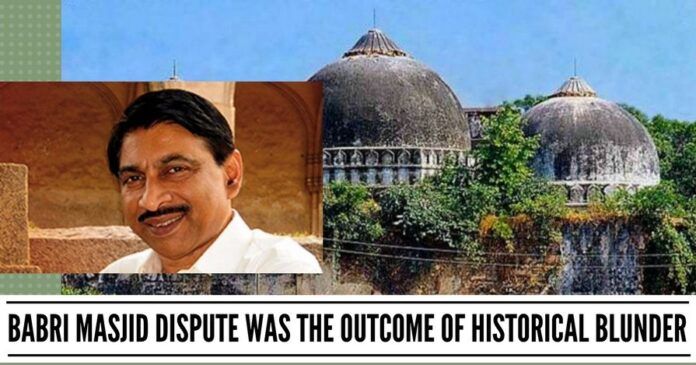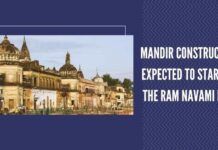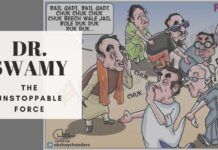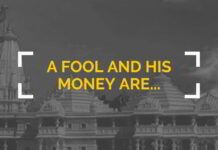
“Those who accuse me of being party to any political ideology know that whatever I have stated about Ayodhya or anything else, are all completely factual statements.”
Dust hasn’t yet settled over the disclosures made by the renowned archaeologist and former Regional Director of the Archaeological Society of India, KK Muhammed in his autobiography ‘Nyan Enna Bharatiyan’ (‘I an Indian’) in 2016. His book garnered a great deal of attention especially due to the references made to the Babri Masjid dispute. The Hindi translation of the book is out on the stands and has been extremely well received.
He categorically states in the book that working at the Ayodhya site was the most significant experience of his archaeological journey. Mr Muhammed was part of the excavation team under Prof BB Lal in 1976-77. He spoke about the evidence of the existence of the temple and the 14 pillars at the site way back in 1990. His statement is a matter of record as it was published by the Indian Express in the letters to the editor column. The subverting of data took place when many of the leftist historians said there were no remains of temples and that the comments were merely the creations of some Hindu groups of people. It was on that basis as per the court order that the site was again taken up for excavation in 2002-2003 and thereon.The pillars were dismantled during the December 6th episode but Mr Muhammed feels they may still exist somewhere. He calls his book a kind of crusade against all these historical facts that have been suppressed despite the evidence.His intention was to provide certain historical facts, which are also useful for the Muslim community, who he believes have been misled by the Marxists all this while.
His impression is that the Muslims wanted an amicable settlement to the Babri Masjid issue but the Leftist historians misled them by stating that there was no temple below the ruins. These historians were blissfully unaware of the potential of archaeological data and they gave very wrong information to the Muslim community. These falsehoods were widely reported by many newspapers. This lethal combination – the Marxist historians and some of the newspapers (he has specifically spoken about the Times of India) – led the Muslims to a point of no return. But for this, Mr Muhammed feels that the Muslims would have willingly settled for a very amicable settlement to the issue. If that had happened many other issues which the country is now struggling with would have been settled too. He emphasises that it was a kind of historical blunder committed.
There are two different types of approaches, the historical approach and the archaeological approach.
He has also come out strongly against historians like Irfan Habib whom he describes as a man who wouldn’t allow any kind of free thinking and merely paid lip service to catchphrases like ‘liberty, equality and fraternity’. His disagreements with Habib go back to his student days. “Though there are many people like him, I agree that this is not the case with all leftist historians. I had very good relations with Prof RS Sharma, a leading left historian who would sometimes drop into my office in Patna unannounced,” he says.
Mr Muhammed states that there are two different types of approaches, the historical approach and the archaeological approach. If an archaeologist wants to write something, he has to get some basic data and that is what he wants to emphasise. He would use historical data but his main basis would be archaeology itself. Historians use their historical data but if archaeological data is available, they will use that.
He has ridiculed strange allegations made by people like P N Oak, who came out with claims about the Qutub Minar being a Vishnu tower and the Taj Mahal being a Tejomahalaya Shiva temple. They claim that the Taj was built in the 13th and 14th C. If one looks at the history of the Taj and observes its architecture, it clearly reflects an architectural evolution. The dome, the minarets, the arches and the tomb are part of an evolution that could come about only during the time of Shahjahan. This couldn’t have come about even during the time of Jahangir or Akbar. An individual who understands history, archaeology and architectural evolution can easily segregate Mughal structures on the basis of architectural and archaeological features and data. If you take the dome of Humayun’s tomb (68 years before the Taj Mahal), the minaret of Akbar’s tomb in Sikandra, the inlay work of the I’timād-ud-Daulah’s tomb (Jahangir’s father-in-law) and the jaali work of Salim Chisti – place them all together and you have the Taj Mahal. This evolution could not have come in the 13th or 14th centuries asserts Mr Muhammed.
The original doorways of the Taj Mahal have been looted way back and the present ones are from the period of Lord Curzon.
In the Hindu treatises regarding temple construction, there are no mentions of arches, minarets or domes too. These ‘historians’ also say that they have secretly taken a part of the doorway and sent it for historical dating and that has given them 14th C. What they forget is that the original doorways of the Taj Mahal have been looted way back and the present ones are from the period of Lord Curzon. To claim this gives them the 13th and 14th C does make these people a laughing stock.
Detractors like leftist historian Dr KN Pannikar had questioned the timing of the release of ‘Nyan Enna Bharatiya’ and made allegations that Mr Muhammed was attempting to find relevance with the BJP campaign in the last elections in Kerala. He has, however, not aligned with any political line of thought. There have been instances where he has opposed extreme Hindu groups in their attempts of illegal encroachments. There probably hasn’t been any other archaeologist or historian who has taken such bold steps against political parties, be it the BJP or the Congress. There were occasions for archaeologists before him too but nobody took such steps to counter the VHP even when the BJP was in power at the centre.
During his tenure in 2000, he discovered that the Vishwa Hindu Parishad (VHP)wanted to extend an illegally constructed temple in Sasaram near the tomb of Sher Shah Suri. After failing to reason with them, he eventually had to secure a court order to stop the construction. Another instance was regarding a 20th C temple beside the Taj Mahal. During 2003, the VHP wanted to construct an illegal extension to that temple despite knowing that no further extensions were allowed in the vicinity up to 500 meters of the Taj. Mr Muhammedwent ahead and took the help of the state administration to demolish the extension. His effigy was burnt at Purani Mandi in Agra and a few months before that he had a providential escape when his office was attacked.
“Those who accuse me of being party to any political ideology know very well that whatever I have stated about Ayodhya or anything else for that matter, are all completely factual statements,” he asserts.
Note:
1. The views expressed here are those of the author and do not necessarily represent or reflect the views of PGurus.
- Rajashree Birla–A Karmayogini who Leads by Example - March 19, 2018
- Jamnalal Bajaj – a Humanitarian Reformist - February 15, 2018
- Augmenting the Indo-oman Relationship - February 13, 2018











[…] Babri Masjid dispute was the outcome of historical blunder: ex-ASI Regional Director K K Muhammed – Jan 12, 2018, […]
[…] Babri Masjid dispute was the outcome of historical blunder: ex-ASI Regional Director K K Muhammed – Jan 12, 2018, […]
Why we are letting converts live when they have no love for their own roots. Mohammed should find why many Hindu fools converted to Islam and are still Muslims
Good & informative article
Very well researched and succinctly written. Need this kind of thinking to perpetuate!